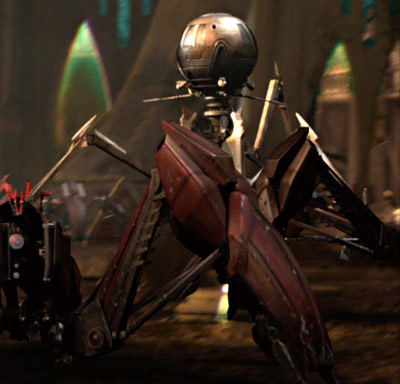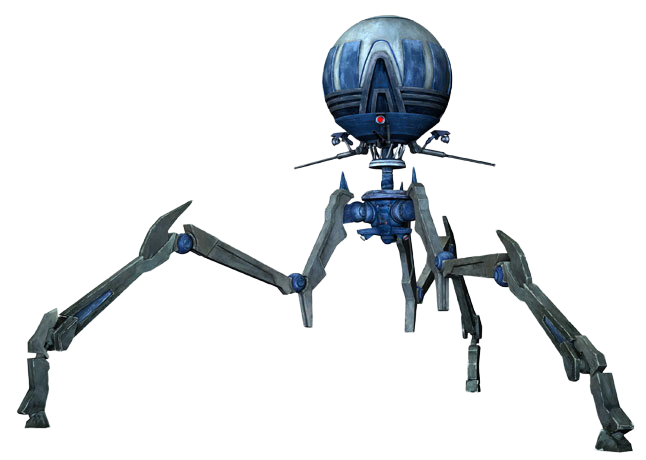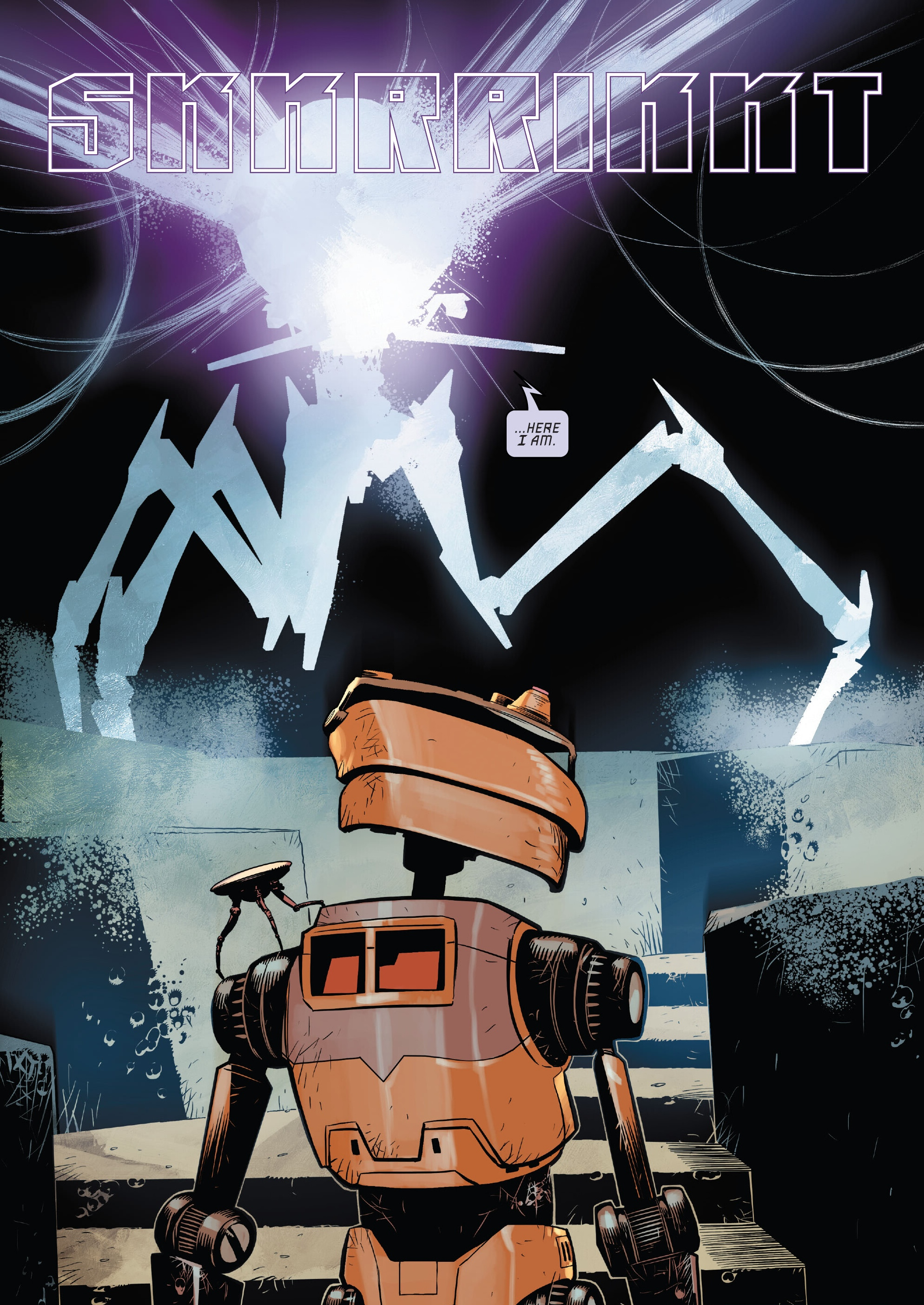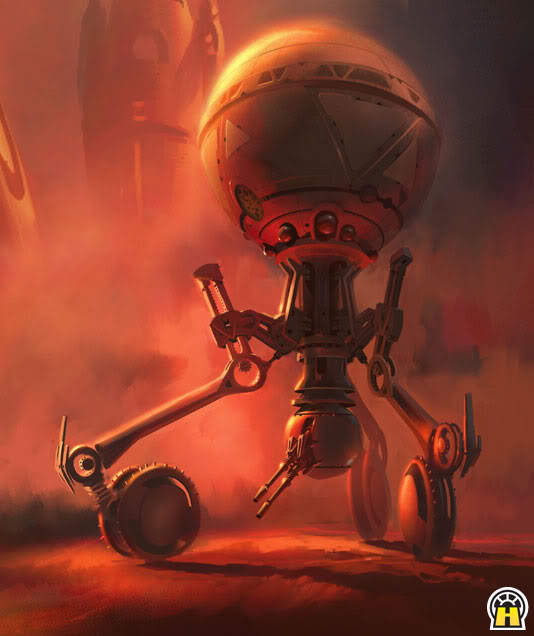A three-legged droid walker model manufactured by the Techno Union was the octuptarra tri-droid. It was also referred to as the octuptarra droid or simply the tri-droid, and gained the nickname "virus droid" because it sometimes carried biological plagues. The Confederacy of Independent Systems utilized these droids, which came in various sizes like the nimble octuptarra combat tri-droids and the massive octuptarra magna tri-droids, during the Clone Wars.
The octuptarra tri-droid, a fourth class battle droid walker model, was essentially a larger and more formidable version of the DSD1 dwarf spider droid. The droid's cognitive modules and sensor systems were housed in its large head. Its three red photoreceptors provided all-around vision, virtually eliminating blind spots and making surprise attacks from behind nearly impossible. The octuptarra's body was fully shielded against such attacks and was also resistant to electric-based assaults. Furthermore, its strong hull could withstand blasts from the Zaly Shield.
These droids possessed an omnidirectional firing range. Standard octuptarra tri-droids were equipped with three rotating laser cannons evenly spaced beneath the photoreceptors and around the central stalk, enabling them to quickly target enemies from any direction. Their three triple-jointed, hydraulic limbs allowed them to climb steep inclines. However, the three-legged design was a significant vulnerability; damage to one leg could cause the entire droid to collapse. Additionally, their slow speed and susceptibility to tripping were also weaknesses.

During the Clone Wars, octuptarra tri-droids were manufactured in various sizes. The octuptarra combat tri-droids, agile, battle droid-sized variants, stood at 3.6 meters tall and featured a highly maneuverable chassis. Primarily utilized as anti-personnel platforms, some versions carried airborne biological plagues within their bulbous heads. This enabled them to inflict widespread damage on the enemy even after being destroyed, earning them the moniker "virus droids." The largest models, known as octuptarra magna tri-droids, reached a height of 14.59 meters and served as combat artillery. Capable of engaging heavily armored All Terrain Tactical Enforcers, their laser cannons could be swapped out for chain-fed missile launchers.
The octuptarra tri-droid's name originated from the octuptarra, an eight-eyed, gasbag-headed vine walker native to Skako. Notably, an octuptarra corrupted by the Scourge demonstrated the ability to speak Galactic Basic Standard. A specialized version of the octuptarra magna tri-droid, deployed on the planet Skako Minor, incorporated an engine at its waist, generating sufficient thrust for hovering several meters above the ground.

Primarily, the Techno Union division within the Separatist Droid Army was responsible for manufacturing the octuptarra tri-droid, which they frequently deployed in battles throughout the Clone Wars. During the Battle of Christophsis in 22 BBY, octuptarra magna tri-droids saw action, with several being destroyed thanks to the efforts of Jedi General Anakin Skywalker and Torrent Company clone troopers under his command. Later in the same battle, some were positioned outside the Separatist deflector shield. In 19 BBY, octuptarra magna tri-droids were employed to defend Purkoll, the Techno Union's headquarters, on Skako Minor. Near the Clone Wars' conclusion, octuptarra combat tri-droids were used to safeguard General Grievous' Pau City command center during the Battle of Utapau. Simultaneously, both types of tri-droids participated in a battle on Mygeeto.

Following the Galactic Republic's replacement by the Galactic Empire, most octuptarra tri-droids were deactivated. However, one remained derelict within the secret Techno Union droid factory on Mustafar until the scourge of the droids. The Scourge, after corrupting ZED-6-7 with a spider-droid and entering the factory in that combined form, discovered and corrupted the octuptarra. The Scourge then used the octuptarra to emerge from the ground and attack Darth Vader, the Sith Lord, during the droid uprising. The octuptarra's robust structure shielded the Scourge from Vader's electrostaff and Zaly Shield, which Vader was forced to use in place of his Force powers during the Force Wave. However, the battle with the octuptarra helped Vader regain control over his Force abilities, enabling him to destroy the corrupted droid.

The octuptarra tri-droid was initially conceived for the 2005 film Star Wars: Episode III Revenge of the Sith. Its official designation was first provided in Star Wars: Absolutely Everything You Need to Know, a reference book authored by Adam Bray, Kerrie Dougherty, Cole Horton, and [Michael Kogge], and released on September 4, 2015. Revenge of the Sith featured several variations of the octuptarra tri-droid. The octuptarra combat tri-droid on Utapau had its digital model scaled up and modified to create the octuptarra magna tri-droid seen on Mygeeto; minor cosmetic differences existed between the two, such as the replacement of the former's laser cannons with chain-fed guns on the latter. Early sketches of Utapau by Ryan Church included the octuptarra tri-droid.
Pablo Hidalgo of the Lucasfilm Story Group stated that the names for the small and large octuptarra droids were combined by the time Star Wars: The Clone Wars was in production. Within Legends continuity, smaller units were originally referred to as octuptarras, while larger units were known as tri-droids. The Star Wars: The Clone Wars: Incredible Vehicles publication officially named the large variant the octuptarra magna tri-droid.